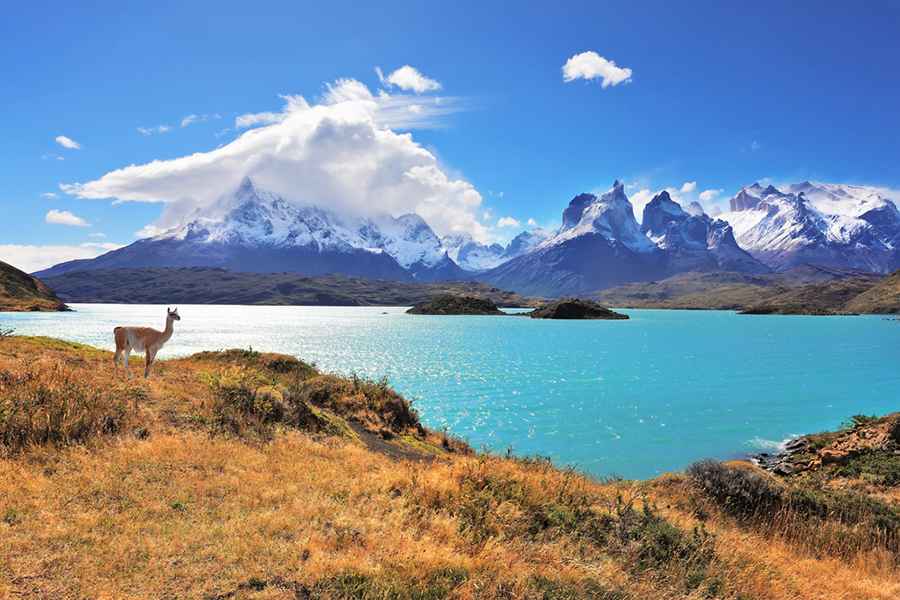Backpacking Through Patagonia: 8 Tips for Solo Adventurers
Many solo travelers dream of backpacking through Patagonia. This vast region in South America has epic scenery, such as mountains, lakes and more. However, as you’re surely already aware if you’re reading this, traveling solo in Patagonia can be not only fun but tough and strenuous. You’ll need to be prepared for unpredictable weather, remote trails and long distances…

Here are 8 simple tips to help you make the most of your solo adventure in Patagonia. Ready to go solo in Patagonia? Let’s get started!
Choose the Best Time for Your Adventure
The best time to visit Patagonia depends on what kind of adventure you’re after; the peak season is generally considered to be November to March, which is Patagonian summer. The weather is milder, and most trails and services are open, making it perfect for hiking and outdoor activities. But it’s also the busiest time, with more tourists on the trails. If you prefer fewer crowds and cooler weather, consider visiting during shoulder season, October or April. Winter lasts from May to September, and it is snowy and cold. This is great for winter sports, but some areas are closed due to weather conditions.
Pack Smart: Essentials You Can't Forget
When backpacking in Patagonia you’re going to need the right gear – this is going to make or break your experience. You should know that the weather can change in an instant, so pack layers of clothing that can handle rain, wind and cold. A good waterproof jacket, thermal base layers and a warm hat and gloves are must-haves. Comfortable, sturdy hiking boots are equally essential for the rough terrain you’re going to be trekking through. A reliable backpack with a rain cover, a lightweight tent, a warm sleeping bag and a portable stove for cooking are also important, and don’t forget a first aid kit, water filter or purification tablets, as well as navigation tools like a map, compass or GPS.
Plan Your Route Carefully
Planning is key in Patagonia, especially when you are solo. Research popular trails like the W Trek or O Circuit in Torres del Paine National Park in Chile or the Fitz Roy Trek in El Chaltén, in Argentina. Decide how many days you want to hike and which campsites or shelters to stay at. Check the difficulty level of each trail to match your experience and fitness level, or else you might find yourself in more than just a pickle… Don’t overestimate your skills and fitness levels, and make sure to book your campsites in advance – especially during high season – to avoid being left stranded.
Prepare for Solo Travel Challenges
Solo travel in Patagonia is amazing, but it comes with its challenges. Carrying all your gear by yourself can be tough, so pack smart yet light. Navigating remote trails can be hard (and dangerous), especially with no cell service, so know how to use a map and compass. For solo travelers who want to stay connected or need to access maps and emergency contacts, consider using the cheapest monthly VPN to ensure secure internet access wherever you can find a signal. Stay positive, be flexible, and enjoy the freedom of solo backpacking.
Stay Safe in Remote Areas
Safety is key when backpacking in remote Patagonia – and all the more so when you’re travelling solo. Again, always carry a first aid kit, a charged phone, and a power bank. Learn basic first aid and know how to treat common injuries like blisters, sprains, or hypothermia. Stick to marked trails and don’t go off alone, especially in tricky terrain. Tell someone your daily plans, location and expected return time. In case of emergency, know the location of ranger stations and emergency numbers. It’s also a great idea to carry a whistle and a flashlight.
Respect Local Culture and Wildlife
Respecting local culture and wildlife is key when backpacking in Patagonia. There are Indigenous communities and unique ecosystems to protect, so always follow the “Leave No Trace” principles: take out all trash, don’t disturb wildlife, and stick to the trails. Learn a few basic Spanish phrases to communicate with locals and show respect for their culture, and when in national parks, follow their rules and guidelines – stay on the paths and don’t feed the animals.
Budget in Advance
Backpacking in Patagonia can be pricey, but there are ways to save: consider camping instead of staying in lodges or hotels. Many national parks have affordable campsites, and some are even free. Cook your own meals by shopping at local markets and carrying a portable stove instead of eating out, and use public transport or share with other travelers to save on transport costs. Try traveling in the shoulder season to avoid peak prices as well.
Always Be Ready for Unpredictable Weather
One of the most important things to remember when backpacking in Patagonia is to be prepared for the weather. In Patagonia, you can experience all four seasons in one day: strong winds, sudden rain, and even snow can happen anytime, especially in the mountains – so keep all your electronics and important things in waterproof bags inside your backpack.
Conclusion
Backpacking through Patagonia as a solo was one of the best things I ever did. The views, the freedom, and the thrill of new trails were amazing. But I also learned to be prepared – pack the right gear, know the routes and understand the weather. I remember one day, it went from sunny to snowing in a few hours and having the right layers made all the difference, so if you plan and stay aware, backpacking Patagonia will be an adventure you’ll never forget.
Image credit: Depositphotos